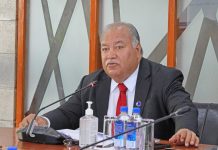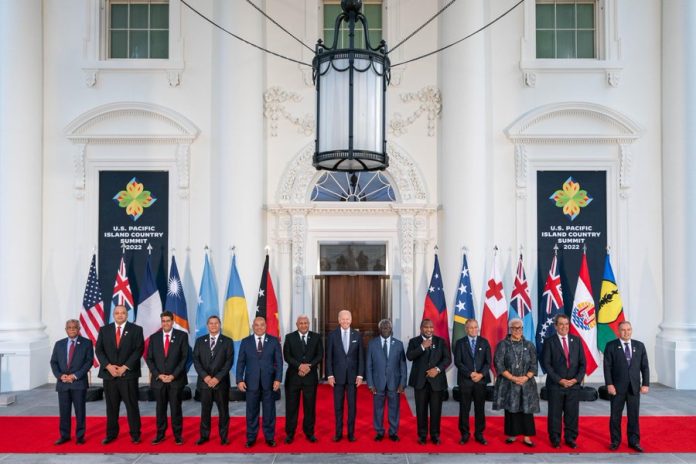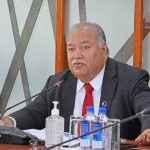By Michael Walsh
President Joe Biden has released the United States’ Pacific partnership strategy. Although it bears some resemblance to the Pacific engagement strategy that was drafted by the Asia–Pacific Security Affairs Subcommittee of the Biden Defense Working Group, this strategy is a separate document that arose through a completely independent drafting process. Nevertheless, it fulfills part of the vision of those who worked on the original policy paper during the 2020 US presidential campaign. It provides a roadmap on the direction for engagement by the US government in the Pacific islands region.
When I reviewed this strategy a few days ago, the first thing that struck me was the considerable emphasis that has been placed on regionalism by the Biden administration. The strategy makes an explicit commitment to bolstering regional institutions such as the Pacific Islands Forum, the Pacific Community and the secretariat of the Pacific Regional Environment Program. No similar mention is made of a commitment to bolstering subregional institutions such as the Melanesian Spearhead Group, Polynesian Leaders Group and Micronesian Presidents’ Summit.
This is significant given the tremendous tension that has existed between regionalism and subregionalism among Pacific island countries over the past few years. Recall what happened last year. The member states of the Micronesian Presidents’ Summit announced their decision to withdraw from the Pacific Islands Forum. Over the summer, Kiribati appeared to follow through on that threat. Those wounds have yet to heal. So, it is quite remarkable that the Biden administration has made the decision to take sides and declare a preference for regionalism in the ordering of the international relations of Pacific island countries.
Yet, this move carries monumental risks. In the short run, it could amplify the regional dynamics involved in the compact negotiations with the Federated States of Micronesia, the Republic of the Marshall Islands and Republic of Palau. And that could frustrate the successful completion of the renewal negotiations with FSM and the Marshall Islands by the end of the year. In the long run, it could result in the weakening of relations among the Micronesian states and between the Micronesian states and the United States.
It’s therefore important to be clear about one thing: Biden and his administration are taking a gamble here. They are betting that the upside potential is worth more than the downside risks. Let’s hope they’re right. No one wants them to roll craps. That could imperil the preservation of American hegemony in the North Pacific.
After pondering this pivot towards regionalism, I was struck by the realisation that this strategy provides a roadmap on the overall direction for only one kind of engagement with the Pacific islands. By definition, it doesn’t provide a roadmap on the overall direction for relationships that result from formal agreements between two or more nations for broad, long-term objectives that further the common interests of the respective parties. It therefore can’t provide a roadmap on the overall direction for free-association relationships and homeland relationships. Here, the scope is more limited. It is targeted at relationships that result from less formal agreements between two or more nations for narrower, shorter term objectives that further the overlapping interests of the respective parties.
As a consequence, the Biden administration has left the US government wanting for a comprehensive roadmap on the overall direction for engagement in the Pacific islands region. Someday, the US Congress may remedy that situation by demanding one. If that happens, the administration could easily fulfill the request by creating two additional national strategies. Like the Pacific partnership strategy, they could be nested side by side under the Indo-Pacific strategy. For argument’s sake, we could call them the Pacific free-association strategy and the Pacific homeland strategy.
Ideally, all of these strategies should have been developed by one team in a collaborative process involving three simultaneous work streams. That would have made the most sense, since the government needs to think systematically about developing, implementing and sustaining relationships in the Pacific islands region. Unfortunately, the National Security Council appears to have taken a different approach with the development of this strategy. That could make it a lot more difficult for the US government to integrate and harmonise its different kinds of engagements across the Pacific islands region.
SOURCE: THE STRATGIST/PACNEWS


















